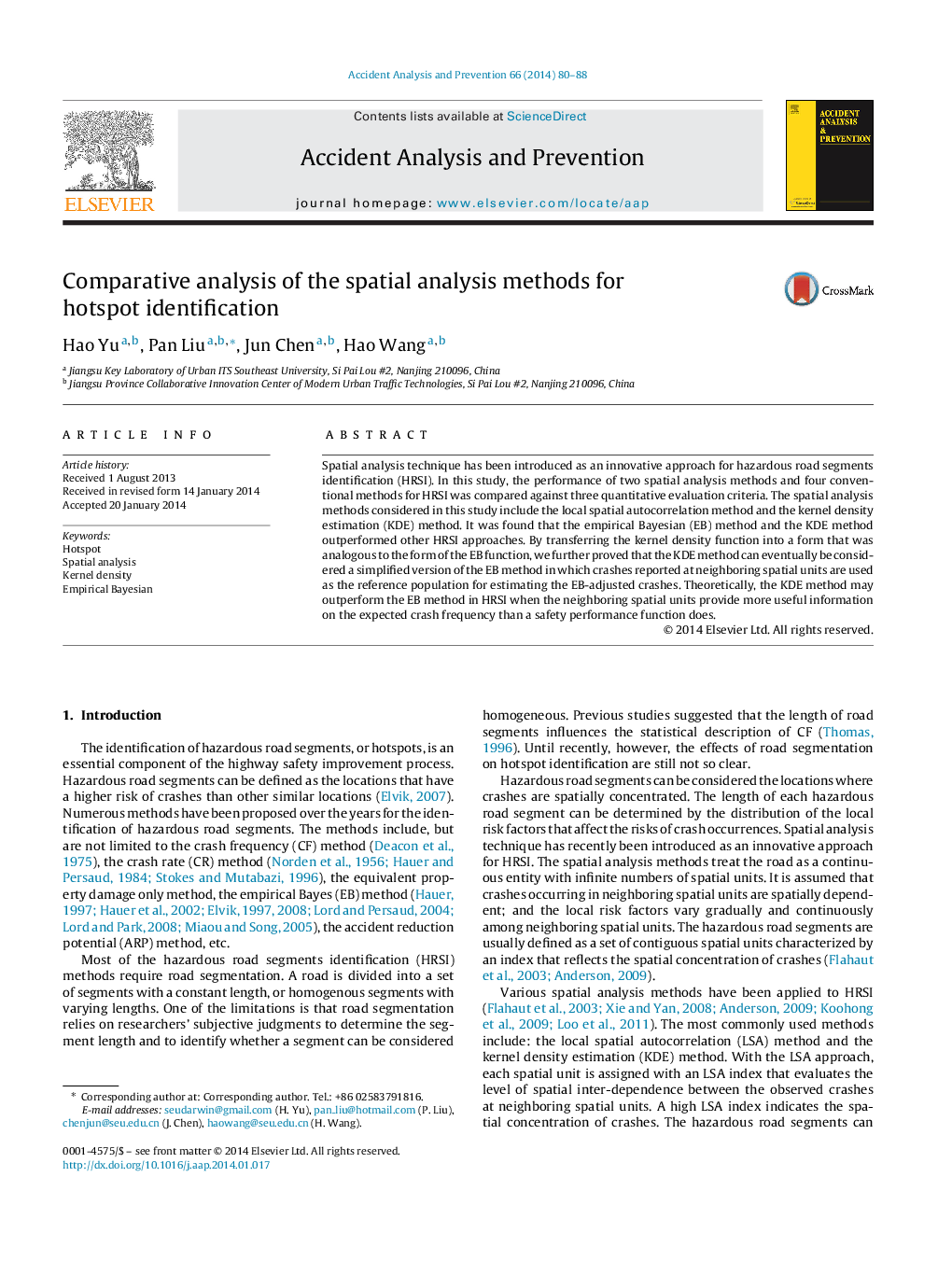| کد مقاله | کد نشریه | سال انتشار | مقاله انگلیسی | نسخه تمام متن |
|---|---|---|---|---|
| 572372 | 1452931 | 2014 | 9 صفحه PDF | دانلود رایگان |
• Performance of two spatial analysis and four conventional HRSI methods was compared.
• The EB method and the KDE method outperform other approaches for HRSI.
• The overall performance of the EB method and the KDE method is comparable.
• The KDE method can be considered a simplified version of the EB method.
Spatial analysis technique has been introduced as an innovative approach for hazardous road segments identification (HRSI). In this study, the performance of two spatial analysis methods and four conventional methods for HRSI was compared against three quantitative evaluation criteria. The spatial analysis methods considered in this study include the local spatial autocorrelation method and the kernel density estimation (KDE) method. It was found that the empirical Bayesian (EB) method and the KDE method outperformed other HRSI approaches. By transferring the kernel density function into a form that was analogous to the form of the EB function, we further proved that the KDE method can eventually be considered a simplified version of the EB method in which crashes reported at neighboring spatial units are used as the reference population for estimating the EB-adjusted crashes. Theoretically, the KDE method may outperform the EB method in HRSI when the neighboring spatial units provide more useful information on the expected crash frequency than a safety performance function does.
Journal: Accident Analysis & Prevention - Volume 66, May 2014, Pages 80–88
